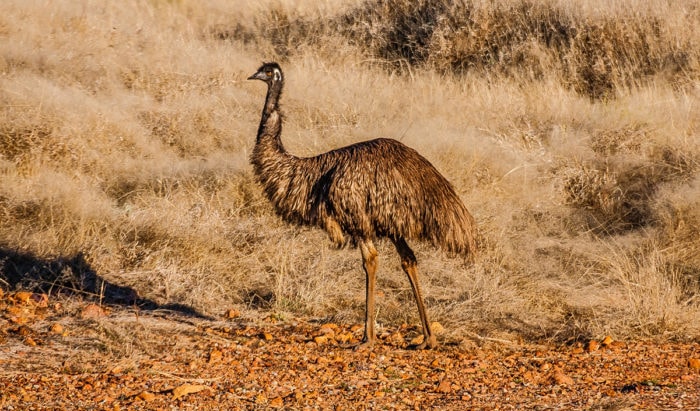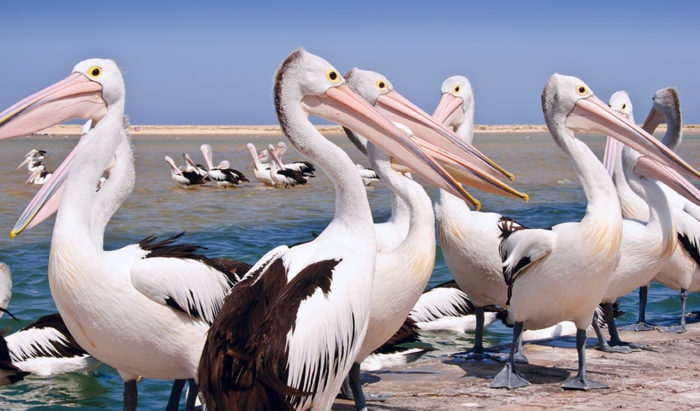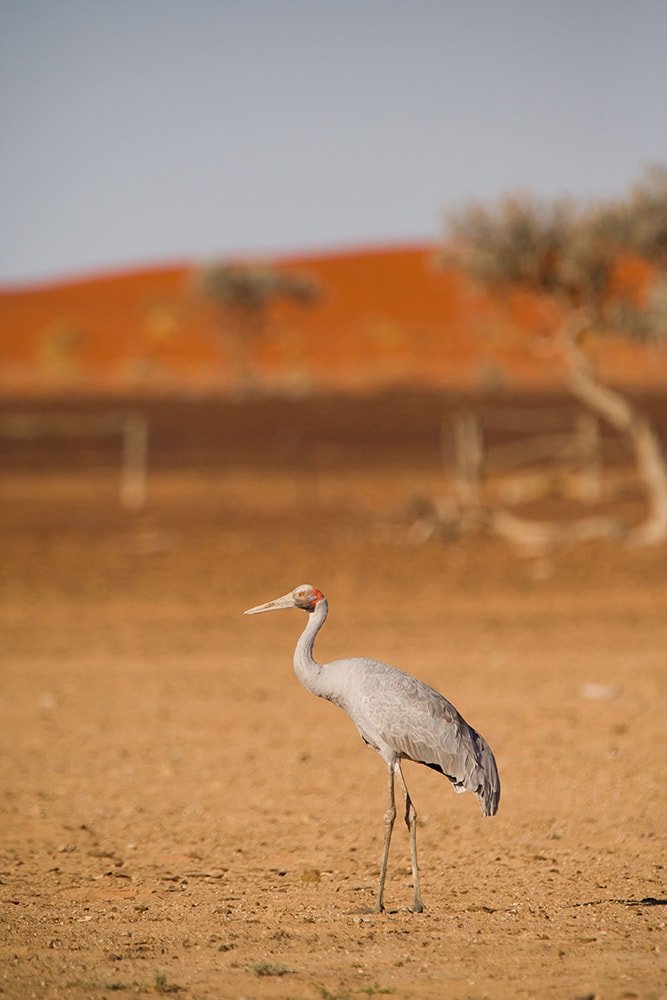Australia’s big birds

AUSTRALIA IS home to some very large, charismatic birds. In fact, the emu is considered to be the second largest in the world, right after the ostrich.
Extremely large beaks, stilt-like legs and long necks are what sets these birds a part, but also that these guys are usually one of the last survivors of now-extinct groups of bird.
Here, we look at some of their defining attributes – comically stealthy runs and all – and why we’re lucky we have them, here in Australia.
1. Emu
Dromaius novaehollandiae
Size: up to 1.9m, 60kg
There’s a lot to love about emus, from the way they run scared and confused from your backyard sprinkler, to their wild, excited dancing.
The emu is a member of the genus Dromaius, of which it is the only living member. Other members of the genus including the Tasmanian emu and King Island emu are now extinct. The resilience of the last living emus is best exemplified in the story of the emu wars.
Back in 1932, Australian troops were dumbfounded when they found themselves outmaneuvered. A group of 20,000 emus had been devastating farms across WA for some time. The farmers under attack (many ex-soldiers themselves) had eventually petitioned for military aid.
Once the conflict began, the emus proved almost impossible to hit with machine-gun fire, and they seemed able to shrug off even serious injury from bullets without breaking stride.
If this doesn’t make you love them or, at least, respect them, then their weather-reading skills will. Young emus learn to read the weather based on how their fathers react to different conditions. This is because the father has learnt that thunder clouds mean rain and that rain means grass and herbage, so when he is cued to move he heads towards the biggest cloud bank he can see. So yes, they’re also very smart.

(Image credit: Volodymyr Dvornyk)
2. Southern cassowary
Casuarius casuarius
Size: Up to 1.8m, 55kg
These incredible, ancient birds are one-of-a-kind, literally – they’re one of the last existing species of megafauna. But despite their large size, they’re notoriously difficult to spot. In fact, photographers have even resorted to using fake fruit lures to get even a glimpse of the bird.
And boy can they run! Their enormously powerful legs can carry them hundreds of metres away from you in seconds, and the tangled understory of their habitat, including the Daintree rainforest, doesn’t slow them down, instead they effortlessly glide through it.
Indeed, they know the rainforest very, very well. Female southern cassowaries have often been described as ‘rainforest gardeners’, helping to propagate hundreds of different species of fruit. Because of its importance to the rainforest ecosystem, cassowaries are considered to be keystone species and their decline would be detrimental.
Also, ever wondered what’s inside the cassowary’s casque (the appendage on their head)? Well, an autopsy revealed that it’s filled with a spongey, honeycomb like structure. We still don’t quite know what its purpose is though. Some have speculated that it’s a helmet, others that it plays a part in courtship.

(Image credit: Torsten Pursche/Shutterstock)
3. Australian pelican
Pelecanus conspicillatus
Size: Up to 1.8m, 13kg
Pelicans are Australian icons (who could forget Mr Percival), dotting themselves across wharves and harbours in coastal Australian towns, plunging their bills into the water and capturing fish.
They may not be as tall as the emu or the cassowary, but they’re still considered to be one of the heaviest flying birds in the world, weighing up to 13kg. And their bills are very intimidating. Often a pelican will crane its neck with it mouth agape, scaring off invaders.
But Aussie pelicans weren’t and still aren’t always welcome at the local wharf. The species was harvested for food by the Yandruwandha people in the Coongie Lakes, has long been persecuted and had nesting colonies destroyed by European fisher folk as perceived competitors for their fish stocks.
What many Australians wouldn’t know about pelicans is that, every decade or so, some leave their coastal sanctuaries for the small, inland lakes of the harsh Aussie outback, which experts argue is for breeding and feeding purposes.

(Image credit: Durden images)
4. Brolga
Antigone rubicunda
Size: Up to 1.5m, 8kg
Our largest waterbird, the brolga, is the absolute dancing queen of Australia with its elaborate, ritualised moves. They can be seen bobbing their heads, bowing and strutting their stuff all over Australia. Sometimes, they even lean back, tilt their bill to the sky and let out a loud trumpet noise.
The brolga is considered to be sacred by Aboriginal Australians. As the story goes, a dancer named brolga was transformed into a crane, but never quite gave up her moves. Now, the dance of the brolga is regularly performed at corroborees by different Aboriginal groups.
The tall, proud figure of the dancing brolga is revered, so much so that in 1986 the Queensland Government made the brolga its official bird emblem and it also decorates the state’s coat of arms, alongside the red deer.

(Image credit: Janelle Lugge)




